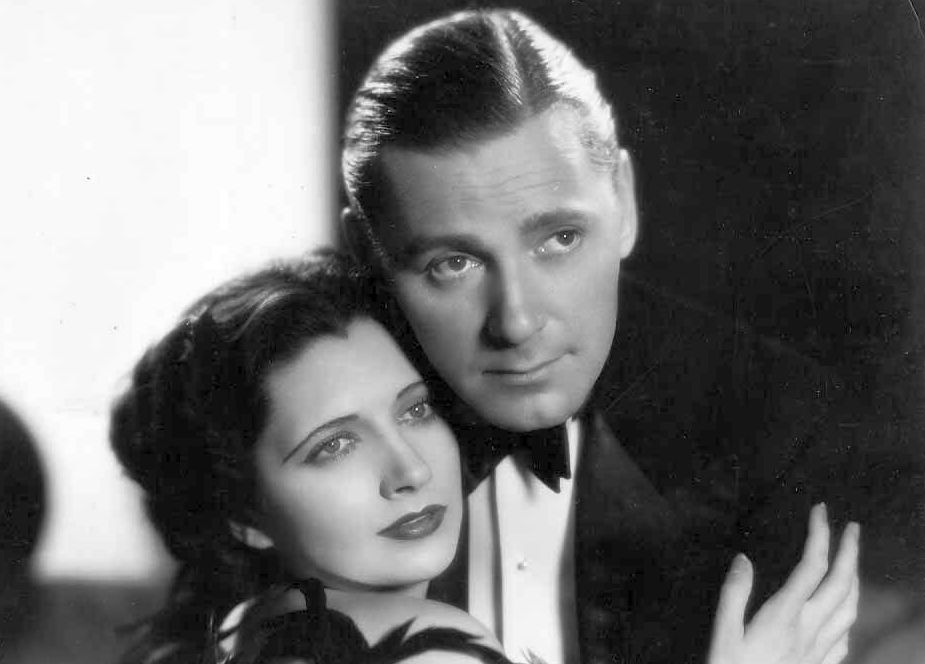Happy Birthday, Herbert Marshall!
The man born Herbert Brough Falcon Marshall on this date in 1890 is revered by classic movie mavens as one of the premiere leading men in motion pictures in the 1930s and 1940s. Marshall graced so many classics, among them Trouble in Paradise (1932), Foreign Correspondent (1940), The Letter (1940), The Little Foxes (1941), and Duel in the Sun (1946). What movie fans may not remember, however, is that “Bart” excelled in the aural medium; appearing multiple times on The Lux Radio Theatre, The Gulf/Lady Esther/Camel Screen Guild Theatre, and Suspense (the actor was even on the audition show for “radio’s outstanding theatre of thrills”: Forecast). He was also the host of the radio anthology series Hollywood Star Theatre (from 1946 to 1947), and starred as The Man Called X from 1944 to 1952. Producer Jack Johnstone, who worked with Marshall on both of these shows, described his friend as “a three-way thespian, equally at home in the motion picture, the theatre or radio.”
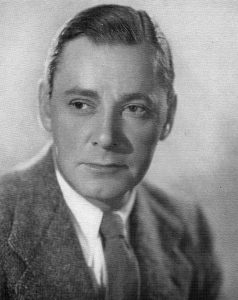 Born in London as the only child to a theatrical family (both father Percy and mother Ethel May were actors), Herbert Marshall didn’t take to show business at first. He was raised by his three maternal aunts whenever his parents were performing, and on those occasions (school vacations) when he did accompany Mom and Pop, he developed a negative view of the profession. Upon graduating from St. Mary’s College in Old Harlow, Essex, Marshall took a job as an accounting clerk…but his career in that vocation was brief. (Bart was a little slow in his calculations.) He accepted a job as an assistant business manager for a theatrical troupe operated by a family friend, and in later years Marshall would look back and say he got into acting because he didn’t know how to do anything else.
Born in London as the only child to a theatrical family (both father Percy and mother Ethel May were actors), Herbert Marshall didn’t take to show business at first. He was raised by his three maternal aunts whenever his parents were performing, and on those occasions (school vacations) when he did accompany Mom and Pop, he developed a negative view of the profession. Upon graduating from St. Mary’s College in Old Harlow, Essex, Marshall took a job as an accounting clerk…but his career in that vocation was brief. (Bart was a little slow in his calculations.) He accepted a job as an assistant business manager for a theatrical troupe operated by a family friend, and in later years Marshall would look back and say he got into acting because he didn’t know how to do anything else.
Herbert Marshall enlisted in World War I and, while serving on the Western Front in 1917, was hit in his left knee by a sniper during the Second Battle of Arras in France. Doctors were unable to save his leg despite a series of operations, and Marshall’s left limb was amputated. After a period of introspection and what he himself described as “self-pity,” Bart made the concerted effort to learn how to walk with his prosthetic leg so that he could return to his acting career. Except for a slight limp, his false leg was virtually undetectable throughout his work on stage and film. Marshall did suffer, however, from the occasional pain common to amputees. (He wore trousers with holes in the pockets to allow him to loosen the strap on his prosthetic leg to ease the discomfort.)
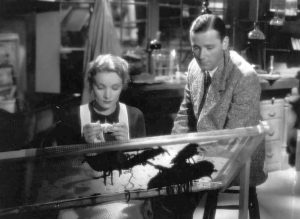 Herbert Marshall’s stage career was a distinguished one; he worked alongside such theatrical lights as Noel Coward, Gertrude Lawrence, Edna Best (who would become his second wife), and Edmund Gwenn (his future Foreign Correspondent co-star), and appeared in productions ranging from As You Like It to The Queen is in the Parlour. His motion picture debut came in 1927 with Mumsie, a British silent film, and Marshall made his first American film appearance alongside Jeanne Eagels in The Letter (1929)—a film that was remade in 1940 with Bette Davis (in which Bart also appeared). Marshall began to attract industry notice when he was cast opposite Marlene Dietrich in Blonde Venus (1932), and throughout his Hollywood career he would work with such leading ladies as Claudette Colbert (1934’s Four Frightened People), Greta Garbo (The Painted Veil [1934]), Barbara Stanwyck (Always Goodbye [1938]), Katharine Hepburn (A Woman Rebels [1936]), and Joan Crawford (When Ladies Meet [1941]). Despite an impressive body of work in movies, Marshall was never nominated for an Academy Award!
Herbert Marshall’s stage career was a distinguished one; he worked alongside such theatrical lights as Noel Coward, Gertrude Lawrence, Edna Best (who would become his second wife), and Edmund Gwenn (his future Foreign Correspondent co-star), and appeared in productions ranging from As You Like It to The Queen is in the Parlour. His motion picture debut came in 1927 with Mumsie, a British silent film, and Marshall made his first American film appearance alongside Jeanne Eagels in The Letter (1929)—a film that was remade in 1940 with Bette Davis (in which Bart also appeared). Marshall began to attract industry notice when he was cast opposite Marlene Dietrich in Blonde Venus (1932), and throughout his Hollywood career he would work with such leading ladies as Claudette Colbert (1934’s Four Frightened People), Greta Garbo (The Painted Veil [1934]), Barbara Stanwyck (Always Goodbye [1938]), Katharine Hepburn (A Woman Rebels [1936]), and Joan Crawford (When Ladies Meet [1941]). Despite an impressive body of work in movies, Marshall was never nominated for an Academy Award!
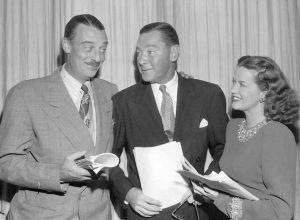 Herbert Marshall’s busy movie career might go a long way toward explaining why he was frequently called upon to stand behind a radio microphone. The actor reprised a good many of his film roles in radio adaptations, including The Dark Angel (1935), Mad About Music (1938), and Kathleen (1941). But Marshall was a favorite guest star of many of radio’s top comedians as well, among them George Burns & Gracie Allen, Eddie Cantor, and Bob Hope. Bart filled in for an absent Jack Benny on a February 2, 1941 broadcast of The Jell-O Program and was so well-received that he returned for the following two shows. Marshall worked alongside the likes of Al Jolson, Dinah Shore, and Rudy Vallee, and guested on Command Performance, G.I. Journal, The Harold Lloyd Comedy Theatre, Information Please, The Kraft Music Hall, Mail Call, The Old Gold Program, Request Performance, and The Texaco Star Theatre.
Herbert Marshall’s busy movie career might go a long way toward explaining why he was frequently called upon to stand behind a radio microphone. The actor reprised a good many of his film roles in radio adaptations, including The Dark Angel (1935), Mad About Music (1938), and Kathleen (1941). But Marshall was a favorite guest star of many of radio’s top comedians as well, among them George Burns & Gracie Allen, Eddie Cantor, and Bob Hope. Bart filled in for an absent Jack Benny on a February 2, 1941 broadcast of The Jell-O Program and was so well-received that he returned for the following two shows. Marshall worked alongside the likes of Al Jolson, Dinah Shore, and Rudy Vallee, and guested on Command Performance, G.I. Journal, The Harold Lloyd Comedy Theatre, Information Please, The Kraft Music Hall, Mail Call, The Old Gold Program, Request Performance, and The Texaco Star Theatre.
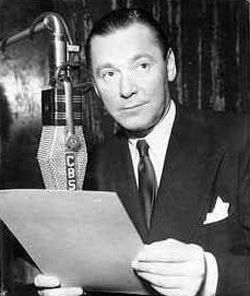 Herbert Marshall’s most prominent radio showcase was as the star of The Man Called X, which premiered on July 10, 1944 (as a summer replacement for The Lux Radio Theatre) over CBS Radio. Marshall played Ken Thurston, an operative who started out as a detective in the show’s early years before morphing into a secret agent who worked for “The Bureau”—globetrotting hither and yon in search of smugglers, black marketeers, etc. Man Called X had the occasional period of inactivity but it would eventually run (on both CBS and NBC) until May 27. 1952. Rounding out Bart’s radio resume are credits for The Cavalcade of America, The CBS Radio Workshop, Columbia Presents Corwin, The First Nighter Program, The Hallmark Hall of Fame, Hallmark Playhouse, Matinee Theatre, The NBC University Theatre, The Silver Theatre, The Skippy Hollywood Theatre, The Star and the Story, Theater of Romance, and This is My Best.
Herbert Marshall’s most prominent radio showcase was as the star of The Man Called X, which premiered on July 10, 1944 (as a summer replacement for The Lux Radio Theatre) over CBS Radio. Marshall played Ken Thurston, an operative who started out as a detective in the show’s early years before morphing into a secret agent who worked for “The Bureau”—globetrotting hither and yon in search of smugglers, black marketeers, etc. Man Called X had the occasional period of inactivity but it would eventually run (on both CBS and NBC) until May 27. 1952. Rounding out Bart’s radio resume are credits for The Cavalcade of America, The CBS Radio Workshop, Columbia Presents Corwin, The First Nighter Program, The Hallmark Hall of Fame, Hallmark Playhouse, Matinee Theatre, The NBC University Theatre, The Silver Theatre, The Skippy Hollywood Theatre, The Star and the Story, Theater of Romance, and This is My Best.
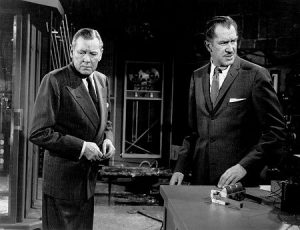 Although he distinguished himself throughout the 1940s with roles in films like The Moon and Sixpence (1942) and The Razor’s Edge (1946), Herbert Marshall found himself settling into character roles by the following decade, turning in fine performances in such favorites as The Underworld Story (1950), The Virgin Queen (1955), and The Fly (1958). Bart also started accepting work on the small screen, as a guest star on such TV series as Letter to Loretta (The Loretta Young Show) and Alfred Hitchcock Presents. Marshall continued to be active in the 1960s, gracing the cast of movies like Midnight Lace (1960), The Caretakers (1963), and The List of Adrian Messenger (1963). But it comes to us all in the end: his valedictory performance was in 1965’s The Third Key. Herbert Marshall left this world for a better one in early 1966 at the age of 75.
Although he distinguished himself throughout the 1940s with roles in films like The Moon and Sixpence (1942) and The Razor’s Edge (1946), Herbert Marshall found himself settling into character roles by the following decade, turning in fine performances in such favorites as The Underworld Story (1950), The Virgin Queen (1955), and The Fly (1958). Bart also started accepting work on the small screen, as a guest star on such TV series as Letter to Loretta (The Loretta Young Show) and Alfred Hitchcock Presents. Marshall continued to be active in the 1960s, gracing the cast of movies like Midnight Lace (1960), The Caretakers (1963), and The List of Adrian Messenger (1963). But it comes to us all in the end: his valedictory performance was in 1965’s The Third Key. Herbert Marshall left this world for a better one in early 1966 at the age of 75.
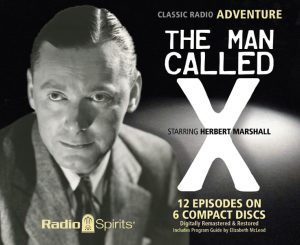 During the Second World War, Herbert Marshall not only was a major presence on AFRS (as host of The Globe Theatre) but he also became an inspiration to veterans who were injured during the conflict, using his personal experiences to offer advice to amputees on how to adjust to their new limbs. Radio Spirits is pleased to offer a collection of broadcasts from our birthday boy’s signature series—remember: “Wherever there’s mystery, intrigue, romance…in all the strange and dangerous places of the world…there you will find The Man Called X!”
During the Second World War, Herbert Marshall not only was a major presence on AFRS (as host of The Globe Theatre) but he also became an inspiration to veterans who were injured during the conflict, using his personal experiences to offer advice to amputees on how to adjust to their new limbs. Radio Spirits is pleased to offer a collection of broadcasts from our birthday boy’s signature series—remember: “Wherever there’s mystery, intrigue, romance…in all the strange and dangerous places of the world…there you will find The Man Called X!”

